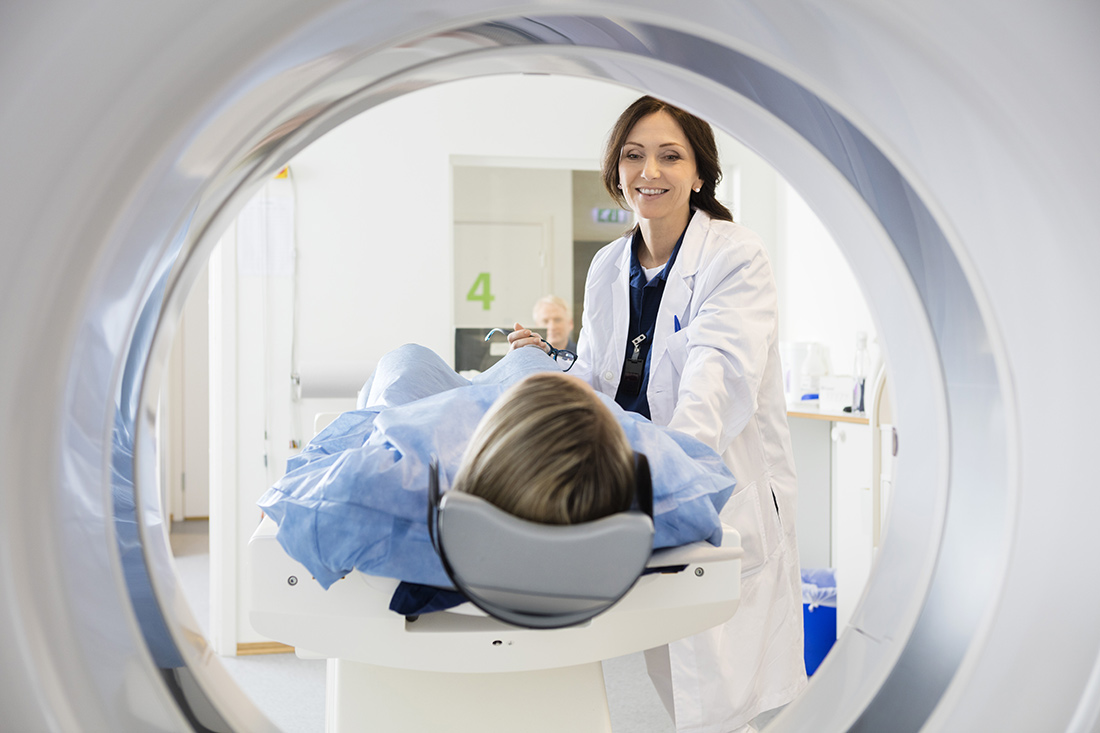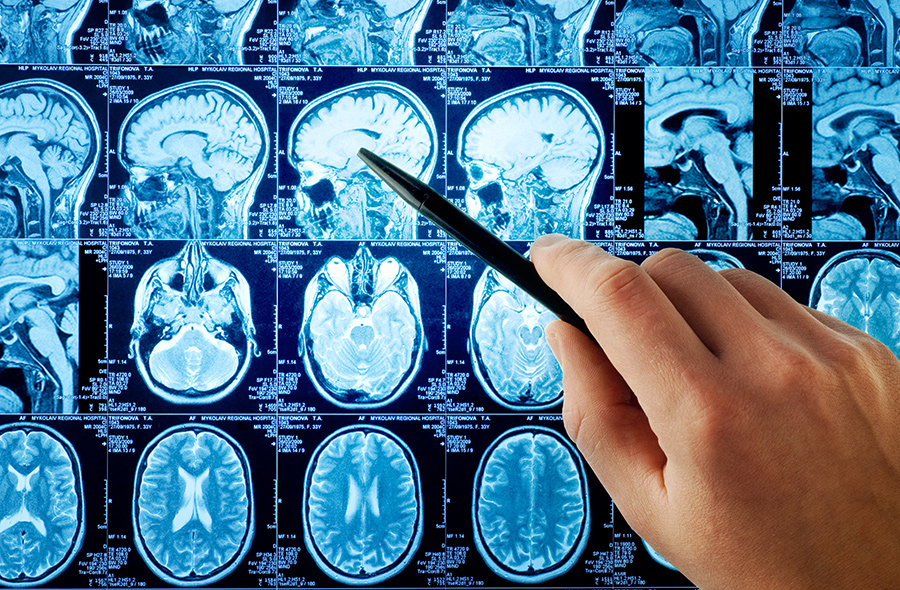
MRI Scan Near Me
Diagnostic imaging is an indispensable component of our healthcare infrastructure. Imaging techniques, including Magnetic Resonance Imaging (MRI), Computerized Tomography Scans (CT scan), and other conventional diagnostic procedures such as X-rays, provide a critical role in the identification and early detection of health issues within the body. Effective, safe, and reliable imaging can help doctors and patients make more informed and accurate medical decisions while reducing costly procedures and they can assist in avoiding complications down the line.
One of the most commonly performed diagnostic imaging procedures, with over 33 million exams performed in 2013 alone, is the Magnetic Resonance Imaging (MRI).
"MRIs allow both doctors and patients to not only “see” the existence of any pathologies, but to also determine with a high degree of accuracy, exact locations."
--- DR. CRISTIN DICKERSON, MD
What Is An MRI?
An MRI is quite simply a medical imaging technique used to create pictures of your body’s internal anatomy. It employs a powerful magnet, radio waves, and a computer that organizes the information and creates an image. Medical MRI scanners are typically large tube-like structures. Patients lie on a flat table which then slides through the scanner.
How Do MRIs Work?
Once a patient is in position, the magnets within the MRI machine create an oscillating magnetic field. Excited atoms within the patient’s own body emit radio frequencies which are picked up by the device, sent to a computer, then translated into a comprehensive image. When necessary, exogenous contrast agents, that act as dyes, are given to the patient to aid in image production and identification of suspected conditions.

How Safe Are MRIs?
MRIs are very safe and non-invasive. Compared to Computed Tomography (CT or CAT) scans, MRI scans do not employ potentially harmful x-rays and rely instead upon harmless magnetic fields and radio frequencies. However, because the machine uses powerful magnets, patients will be required to remove all metals from their person. Patients with metal implants and electronic devices such as a pacemaker, for example, may not be good candidates for MRI exams.
Because the magnet attracts iron-containing or ferromagnetic objects, it is sometimes possible for everyday objects to become dangerous projectiles. Imaging facilities will screen patients in advance for ferromagnetic implants or other medical devices and have patients exchange their street clothing and personal effects for a medical gown or scrubs.
In addition to the risks associated with metals, MRI equipment can be loud. The oscillating magnetic fields cause vibrations that can produce noises as loud as 120 decibels. As a result, ear protection is usually provided for anyone in the MRI suite during operation.
Why Might You Need an MRI?
Magnetic Resonance Imaging (MRI) procedures are one of several analytical imaging techniques standard to the medical and healthcare industry. You can’t treat what you can’t see, and “seeing,” whether via an MRI or another imaging procedure or diagnostic test, is often the very first step.
MRIs allow both doctors and patients to not only “see” the existence of any pathologies, but to also determine with a high degree of accuracy, exact locations. Without this critical imaging tool, many diseases would be challenging to diagnose and treat. That is why MRIs are so important and the reason why so many MRI procedures are prescribed across the nation.
MRIs make diagnosis easier and more accurate.
Not only are MRIs ideal for visualizing spatial data, such as the location of a tumor in a patient’s brain, MRI scans are also highly useful tools for producing chemical and physical data. Diffusion MRI, for example, is a highly specialized type of MRI scan designed to use the dissemination of water molecules to generate contrast in magnetic resonance images. What this means is that MRIs can actually non-invasively map extremely fine details of tissue structures with nothing more than H2O.
A primary reason MRIs have become such a popular diagnostic procedure is the relative safety of the imaging equipment when compared to traditional x-rays. Unlike x-rays, and computerized tomography scans (CT scans) which utilize x-rays, magnetic resonance imaging (MRI) scans do not rely on ionizing radiation to produce imaging data. MRIs are safe and do not increase the risk or incidence of developing cancer as a result of undergoing the procedure.
"MRIs make diagnosis easier and more accurate."
--- DR. CRISTIN DICKERSON, MD
When to Choose an MRI
MRIs have a broad range of medical diagnostic applications.
1. Neuroimaging
MRIs are the diagnostic imaging technique of choice when it comes to matters of the brain. Not only do MRIs not carry the same radiation exposure risks associated with CT scans, but they also produce a clearer image of the brain’s delicate structures. MRIs are also recommended for imaging of the brainstem and other complex cranial structures where other imaging procedures are not as effective. Generally speaking, if the brain or spine is involved, an MRI will be the exam of choice.
2. Vascular Imaging
Vascular magnetic imaging is also a standard application of MRI technology. Compared to other conventional vascular diagnostic procedures, such as ultrasound and CT scan, MRIs have some advantages that are inherent to the technology. MRIs produce higher fidelity images of vascular structures. They don’t produce any dangerous radiation and some techniques do not require contrast. And, they can create images without distortion from surrounding bone or air which can often get in the way of other imaging techniques such as ultrasound.
3. Pregnancy
Because magnetic resonance imaging (MRI) technology does not rely on ionizing radiation, it is safe for pregnant women and their unborn babies. MRIs are particularly important for the diagnosis and monitoring of congenital defects and other potentially fatal complications. While ultrasounds are more readily available and used for screening, MRIs produce higher resolution images and provide more information which can be life-saving.
4. Cancer and Oncology
Cancer patients will find MRIs to be an important and universal aspect of treatment. MRIs allow accurate and radiation-free imaging for preoperative staging and play a critical role in the accurate diagnosis and follow-up for treatment or removal of tumors.
"The key is to know when you need an MRI, and when a simple x-ray will do."
--- DR. CRISTIN DICKERSON, MD
The 5 Key Advantages of Magnetic Resonance Imaging
- Image quality
Compared to most imaging technologies, MRIs can produce images of superior quality and resolution. - Non-invasiveness
Many MRI procedures do not require intravenous contrast agents. The imaging procedure itself is non-invasive and relies on magnetic fields, radio waves, and field gradients to produce images. - Accuracy
MRIs produce the most accurate and detailed images which contribute to more accurate diagnoses. - Versatility
MRIs aren’t bound to any one body system or physical region. They are effective for visualizing and managing every part of the human body. - No ionizing radiation
Unlike x-ray based imaging applications, such as traditional x-rays and CT scans, MRIs do not rely on ionizing radiation for imaging purposes. That means no potentially harmful radiation is produced in the imaging process, making MRIs a safer choice. This is especially important for pregnant women and children.
When to Avoid MRIs
While the standard MRI procedure is the industry standard when it comes to diagnostic medical imaging, not everyone can or should get an MRI. Generally speaking, x-rays, ultrasounds, echocardiograms, and other imaging techniques can be just as effective and significantly less expensive than an MRI for the right applications. The key is to know when you need an MRI, and when a simple x-ray will do. This will be a decision best made with the guidance and direction of a trained medical professional.
5 Reasons to Forego an MRI
The Green Imaging Difference
At Green Imaging, we do not operate by conventional industry rules. We are all about transparency and affordability. With Green Imaging you can save 50 to 80% of your out-of-pocket costs for MRI, CT, ultrasounds, and other high-quality imaging services. Affordable MRIs start for as little as $250, compared with $1,600 at other imaging facilities in the Houston area.
Don’t pay secret rates for an MRI. Go Green Imaging instead! If you are searching Google for an "MRI Near Me" check out our locations on the homepage.


